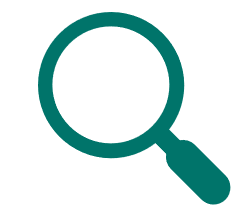Search
News categories
Media concentration & plurality: key trends from the Dutch Media Monitor 2022
New edition of Dutch Media Monitor confirms the shift to online and stresses crucial need for high quality news and information content

The Dutch Media Monitor closely monitors media developments in the Netherlands and provides insights into media concentration and media plurality since 2001.
The Dutch Media Monitor is the annual report by the Dutch Media Authority, the Commissariaat voor de Media (CvdM). The 2022 report provides an overview of media use and insights into the activities of media companies in 2021 and 2022.
In 2022, the Dutch have enjoyed access to a wide choice of media content, both online and offline, from Dutch and international providers. However, there are also developments in the Dutch media landscape that could threaten media plurality. Key trends from the report include:
 Preferences for social media are increasing
Preferences for social media are increasing
Compared to social media and video-on-demand services, TV channels are still the preferred choice for watching news among all age groups. However, this preference has fallen sharply between 2019 and 2022, particularly among young people. This applies also to reading news. Young people use social media more on a daily basis than TV and radio channels or online news media. Older age groups are also increasingly using social media. Dutch professional news media are present on social media. But clear insights into what different groups are using on social media are missing. And it is unclear whether social media content is created on the basis of journalistic norms and values.
 Economic power of international players continues to increase
Economic power of international players continues to increase
Dutch media companies increasingly have to compete with major international players in the global information, entertainment and advertising market. The share of the major international companies in online advertising revenue shows how large their economic power is. This share is estimated to have increased from 54 % in 2015 to 80 % in 2021. In a response to this, Dutch media companies consolidate, cooperate and are investing in a shift to online. Daily reading of online news media has increased and the number of digital subscriptions is increasing strongly. The media sector faces a challenge to create sufficiently interesting digital journalistic content for new and younger paying subscribers. Is a new generation of newsreaders willing to pay for quality news?

Conclusions
-
Need for high quality news and information content: In a concentrated news market we need the presence of high quality professional news and information content, which is created independently, is diverse and trustworthy. Public service media play a very important role in this. Commercially produced content can also have a great public value and is therefore indispensable.
-
Visibility and findability is essential: Quality news must be recognisable, visible and findable online – and on social media in particular.
-
Safegarding the independence of news brands is vital.
-
More research is needed into the diversity of journalistic content. The CvdM is exploring the possibility of starting up a model to monitor the diversity of journalistic news content.
-
More cross-media data and ownership transparency is needed for monitoring purposes.
Source: Commissariaat voor de Media
*Picture © CvdM
Additional EPRA Background: Many of the trends of the Dutch Media Monitor report are comparable throughout Europe. At the last EPRA meeting, Dr Kirsty Park, EDMO Ireland and DCU FuJo Institute (IE), presented selected key findings from the Reuters Digital News Report 2022 for the Thematic session 1: Disinformation, plurality and trust at the 56th EPRA meeting in Antalya on 13 October 2022
Attached Documents
Countries
See also
- Media Concentration & plurality: focus on the Netherlands posted on 05 January, 2022
- The Dutch Media Monitor: Key trends from the 2023 report posted on 06 November, 2023